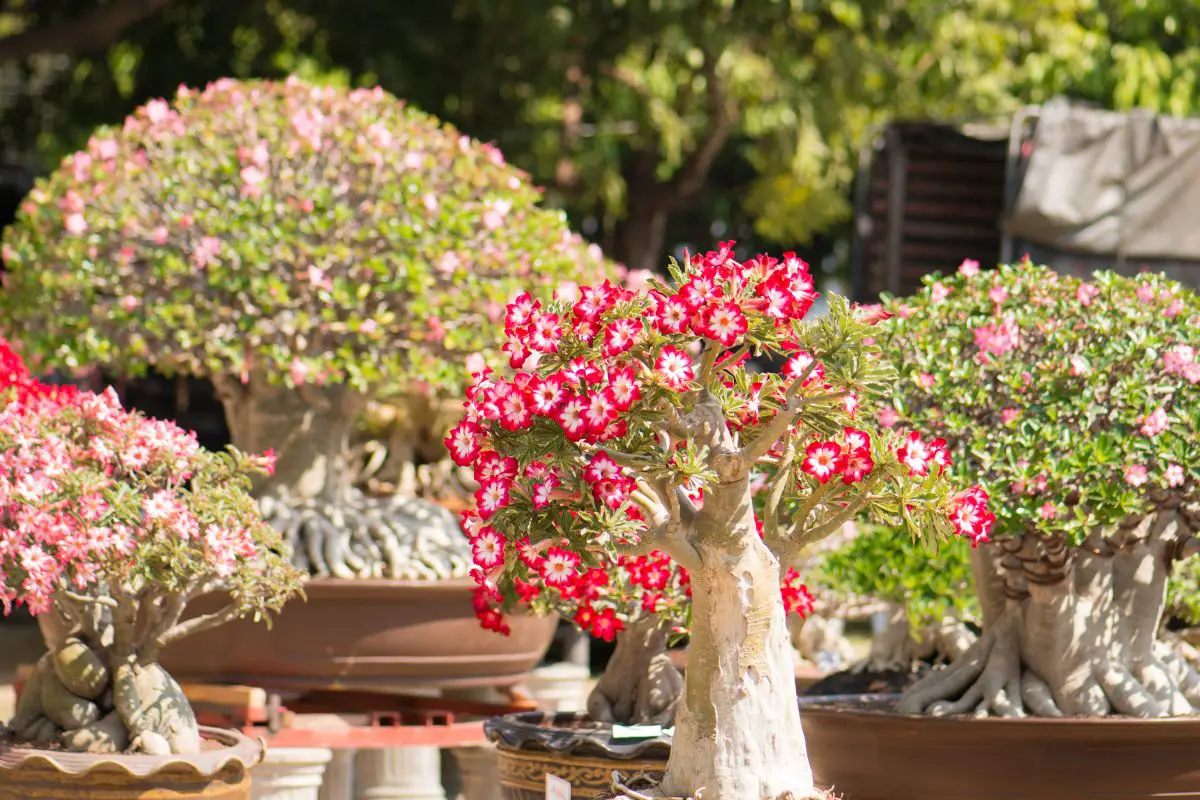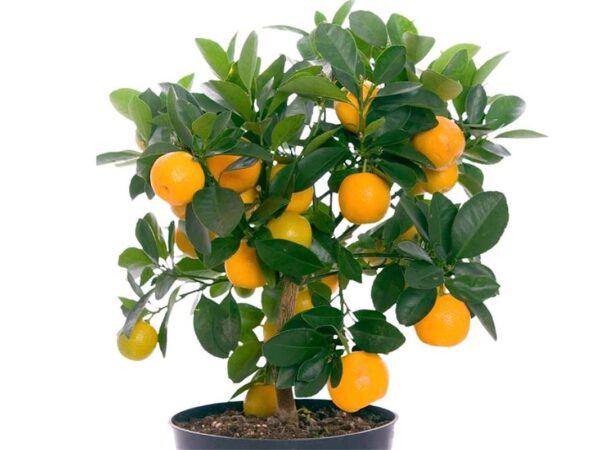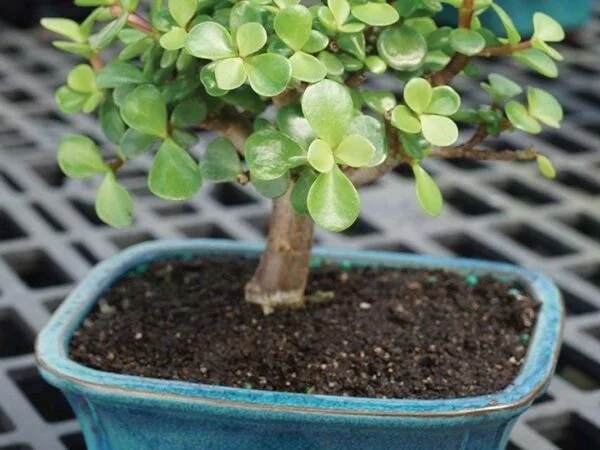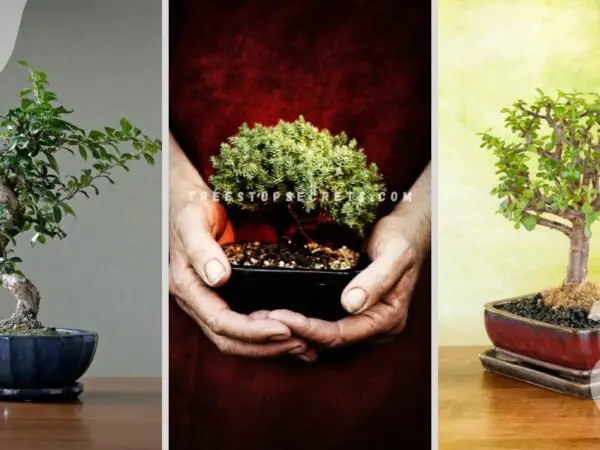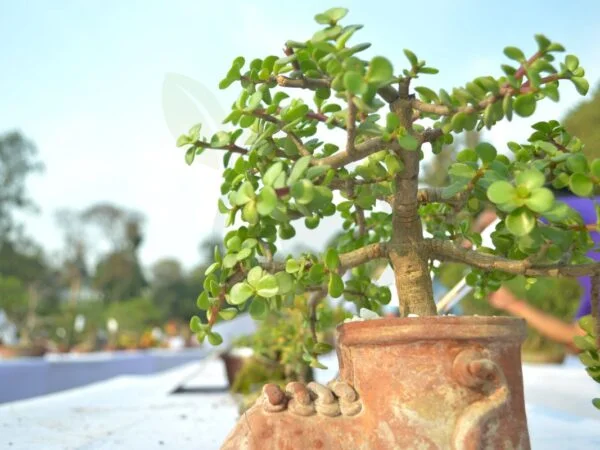Ever wondered how to care for your desert rose bonsai and keep it thriving with beautiful flowers, fresh soil, and new shoots? Make sure to provide the right environment with trees and maintain the soil for optimal growth. Proper care of bonsai trees is crucial for the strength and art of this stunning plant. This includes regularly checking for new shoots, repotting with fresh soil, and pruning stems. In this guide, we'll explore the essential aspects of caring for spring desert rose bonsai trees, from placement and exposure to signs of distress in stems and rejuvenation of flowers.
Are you ready to embark on a journey to master the art of nurturing bonsai trees and desert rose trees this spring? Buckle up as we delve into the intricate details of pinching that will help your miniature desert rose bonsai tree thrive year after year. From finding the perfect placement and miniature container mix for your bonsai tree to understanding its sap flow and seasonal needs, we've got you covered. Let's ensure your desert rose bonsai tree flourishes under the sun and blooms with vitality.
Understanding Desert Rose Bonsai
Desert rose bonsai, also known as Adenium obesum, is a stunning succulent tree plant that has become increasingly popular in the world of bonsai cultivation. Originating from East Africa and the Arabian Peninsula, desert rose bonsai is characterized by its thick, swollen trunk, which resembles a tree, and vibrant flowers. The tree thrives in warm climates with well-draining soil and requires specific care to flourish as a bonsai.
General Information
The desert rose bonsai tree originates from regions with arid climates such as East Africa and the Arabian Peninsula. The tree's distinctive features include a swollen caudex (trunk) that stores water, enabling it to survive in dry conditions. When grown as a bonsai tree, it requires well-draining soil and minimal water to prevent root rot. The basic care requirements for desert rose bonsai involve providing adequate sunlight for the tree, maintaining proper humidity levels, and protecting it from extreme temperatures.
Best Growing Conditions
To ensure optimal growth, the desert rose bonsai tree requires specific environmental conditions. It thrives in warm temperatures ranging between 65°F to 90°F (18°C to 32°C), making it suitable for outdoor cultivation in regions with mild winters, especially for tree cultivation. Providing ample sunlight is crucial for healthy growth; however, protection from intense midday sun may be necessary to prevent leaf scorching. Proper soil composition with excellent drainage capabilities is vital for preventing waterlogged roots and ensuring the plant's health. Furthermore, controlling humidity levels is essential as desert rose bonsai prefers low humidity environments similar to its native habitat.
Types of Desert Rose
There are various types of desert rose species suitable for bonsai cultivation, each offering unique characteristics. Different varieties exhibit diverse flower colors such as pink, red, white, or multicolored blooms. These species vary in their caudex shapes and sizes which can influence the overall aesthetics of the bonsai tree. When selecting a specific type of desert rose for bonsai cultivation, considerations should be given to its growth habits and flowering patterns to align with personal preferences or design goals.
Growth Rate Insights
Understanding the typical growth rate of desert rose bonsai is essential for effective care and maintenance practices. Factors influencing its growth speed include environmental conditions such as temperature and sunlight exposure along with regular pruning techniques employed by growers. By implementing appropriate pruning and training methods at strategic times throughout the year, growers can control the growth rate of their desert rose bonsai while shaping its overall form according to their desired aesthetic vision.
Starting a Desert Rose Bonsai
Propagation Methods
Propagating desert rose bonsai from seeds involves preparing the seeds by soaking them in warm water for 24 hours to soften the hard coating. Then, plant the seeds in a well-draining soil mix and keep them consistently moist while providing warmth and bright, indirect light. It usually takes several weeks for the seeds to germinate, and patience is key during this process.
When propagating desert rose bonsai through cuttings, choose healthy stems and let them callus for a few days before planting them in a well-draining potting mix. Ensure that the cutting receives bright, indirect light and maintain consistent moisture levels. With proper care, the cutting will develop roots within a few weeks.
Successful propagation of desert rose bonsai requires attention to detail. It's crucial to maintain optimal environmental conditions such as warmth, humidity, and light levels throughout the propagation process. Providing consistent moisture without overwatering is essential for ensuring successful root development.
Potting Essentials
When potting a desert rose bonsai, it's important to select a pot that allows for good drainage. Choose a pot with drainage holes made of materials like terracotta or ceramic to ensure excess water can escape easily. The pot size should be proportionate to the plant's root system; typically, it should be around one-third wider than the spread of the roots.
Proper drainage in the potting mix is vital for desert rose bonsai health. A well-draining mix can be achieved by blending coarse sand or perlite with regular potting soil to prevent waterlogging and root rot. Repotting every two years during early spring promotes healthy growth by refreshing the soil nutrients and allowing space for root expansion.
Initial Training Techniques
Shaping young desert rose plants into desired forms involves pruning back excessive growth while retaining key branches that contribute to an aesthetically pleasing shape. Establishing the basic structure of a desert rose bonsai requires careful observation of its natural growth pattern and adjusting it gradually over time through strategic pruning.
Training methods that encourage balanced growth include wiring techniques to guide branches into specific positions without causing damage or constriction. By gently bending young branches into desired shapes using wire, you can influence their growth direction over time while ensuring they remain healthy and undamaged.
Nurturing Your Bonsai
Caring for your desert rose bonsai involves understanding its specific needs to ensure healthy growth and vibrant flowering. Let's delve into the essential aspects of watering, fertilizing, and managing temperature and humidity to provide optimal care for your indoor plant.
Watering Requirements
Understanding the watering needs of your desert rose bonsai is crucial for its well-being. These plants prefer a thorough watering followed by allowing the soil to dry slightly before the next watering. It's important to strike a balance as overwatering can lead to root rot, while underwatering can cause stress and hinder growth. Observing the soil moisture level and considering factors like temperature and humidity can help determine the frequency and quantity of water required for your bonsai.
Signs of overwatering or underwatering in desert rose bonsai are vital indicators of its health. Overwatering may manifest through yellowing leaves, wilting, or a musty odor from the soil, indicating excess moisture. On the other hand, underwatering could lead to drooping leaves, browning at leaf edges, or even premature leaf drop. Monitoring these signs enables you to adjust your watering routine accordingly.
Fertilizing Practices
Choosing suitable fertilizers designed for flowering plants is essential in providing adequate nourishment for your desert rose bonsai. Opt for a balanced fertilizer with equal parts nitrogen, phosphorus, and potassium to support overall plant health and encourage blooming. Fertilize your bonsai during its active growing season from spring through early fall, ensuring it receives the necessary nutrients for robust growth.
The impact of fertilizers on flowering and overall health is noteworthy when caring for desert rose bonsai. Proper fertilization promotes vibrant blooms and sustains the plant's vitality. However, excessive fertilizer application can lead to salt buildup in the soil, causing root damage. Therefore, adhering to recommended dosage guidelines is crucial in maintaining a healthy balance without overwhelming the plant with nutrients.
Temperature and Humidity
Maintaining optimal temperature levels plays a pivotal role in nurturing healthy desert rose bonsai plants indoors. These plants thrive in warm environments with temperatures ranging between 65°F to 90°F (18°C - 32°C). Consistently monitoring indoor temperatures helps prevent stress on your bonsai due to extreme cold or heat.
Managing humidity levels is equally important as desert rose bonsai prefer moderate humidity around 40-60%. To create an ideal environment for your plant, consider using a humidifier or placing shallow trays filled with water near the plant while avoiding direct contact with water that may lead to root rot.
The effects of temperature and humidity on flowering are significant factors influencing the overall well-being of your indoor plant.
Pruning and Shaping Mastery
Pruning is essential for the overall care of your desert rose bonsai. Regular pruning not only helps maintain the desired shape but also promotes the plant's health and vigor. It involves using specific tools and techniques to achieve compact growth and an aesthetically pleasing appearance.
Pruning Techniques
Regular pruning plays a crucial role in maintaining the shape and health of your desert rose bonsai. By removing overgrown or unwanted branches, you can encourage new growth and prevent overcrowding within the canopy. Sharp, clean pruning shears are essential for making precise cuts without causing damage to the plant. Concave cutters help promote rapid healing of pruning wounds by creating clean, rounded cuts. When pruning, it's important to focus on promoting branching by selectively trimming back shoots to encourage denser foliage and compact growth.
Trimming for Health
In addition to shaping the bonsai, trimming is vital for ensuring its overall health. Removing dead or diseased branches not only enhances the aesthetic appeal but also prevents potential sources of infection from spreading throughout the plant. Moreover, proper trimming techniques facilitate improved air circulation within the canopy, reducing the risk of fungal diseases caused by stagnant moisture. By regularly trimming your desert rose bonsai, you can effectively deter pest infestations as well, as pests often target weak or stressed plants.
Shaping a Bonsai
Shaping a desert rose bonsai allows you to express your creativity while honoring traditional bonsai styles such as formal upright or slanting. Achieving these styles requires careful wiring of branches to guide their growth into specific shapes over time. By gently wrapping aluminum or copper wires around branches, you can mold them into elegant curves or angular bends without causing harm to the plant. It's important to balance aesthetics with natural growth patterns when shaping a bonsai; this ensures that while you're crafting a visually appealing masterpiece, you're also respecting the inherent beauty of the plant itself.
Achieving and Maintaining Blooms
Understanding the blooming cycle of desert rose bonsai is crucial for successful flowering. These plants typically bloom after a period of dormancy, with the onset of warmer temperatures triggering the growth of flower buds. To encourage blooming, it's essential to mimic their natural environment by providing adequate warmth and light.
Methods to promote abundant flowering include ensuring that the plant receives ample sunlight. Placing the desert rose bonsai in a location where it can receive at least six hours of direct sunlight daily can significantly enhance its blooming potential. During the growing season, applying a balanced fertilizer with higher phosphorus content can provide the necessary nutrients to support robust flower production.
Addressing factors that may inhibit flowering is equally important. One common inhibitor is overwatering, which can lead to root rot and hinder the plant's ability to produce blooms. Therefore, it's essential to allow the soil to dry out between watering sessions and ensure proper drainage to prevent waterlogged conditions.
Proper light exposure is vital for desert rose bonsai care as it directly impacts their growth and flowering capabilities. These plants thrive in bright, indirect sunlight and should be shielded from harsh midday sun to prevent leaf scorching. However, insufficient light can result in leggy growth and reduced flower production.
Desert rose bonsai prefer well-draining soil that prevents water from pooling around their roots. A recommended potting mix consists of coarse sand, perlite, and organic matter such as peat moss or coconut coir. This blend ensures adequate aeration while retaining sufficient moisture for healthy root development.
Repotting for Vigorous Growth
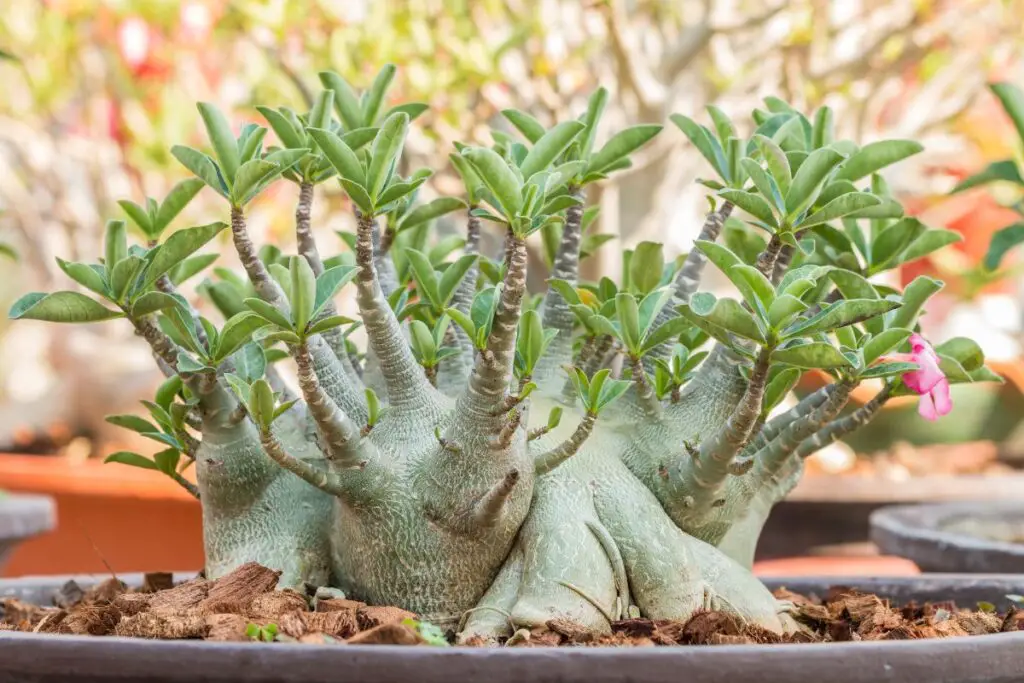
To ensure the vigorous growth of your desert rose bonsai, proper repotting is essential. Here are some tips and guidance for repotting and root care to help your bonsai thrive.
Repotting Tips
Timing is crucial. It's best to repot during the early spring before new growth begins. Select a pot that allows for some room for the roots to grow but isn't excessively large, as this can lead to overwatering and hinder growth. Use well-draining soil specifically designed for succulents or cacti to promote healthy root development.
During the repotting process, carefully remove the old soil from the roots without causing damage. Trim any unhealthy or overly long roots while ensuring that you retain enough healthy ones to support the plant's vitality. After repotting, water lightly and place the bonsai in a shaded area for a few weeks to allow it to recover from any shock caused by the transplanting process.
Root Care
Root care plays a significant role in promoting vigorous growth and overall health in desert rose bonsai. Regularly inspect the roots for any signs of rot or overcrowding within the pot. If you notice overcrowding, consider repotting into a slightly larger container following the aforementioned guidelines.
Encouraging new shoots and new growth on your desert rose bonsai involves maintaining optimal root health. Healthy roots facilitate nutrient absorption, which directly impacts foliage development and flower production. By providing adequate space through proper repotting practices, you create an environment conducive to robust root systems capable of sustaining new growth.
Overcoming Challenges in Care
It's crucial to be aware of the common problems, pests and diseases, and leaf issues management. By understanding these challenges and how to address them effectively, you can ensure the health and vitality of your desert rose bonsai.
Common Problems
One common problem in desert rose bonsai care is overwatering. This can lead to root rot, causing the plant's health to deteriorate. On the other hand, underwatering can result in wilting and leaf drop. It's essential to strike a balance by allowing the soil to dry out slightly between waterings while ensuring adequate hydration for the plant.
Another challenge that bonsai enthusiasts often encounter is maintaining proper humidity levels. Desert rose bonsai thrive in dry conditions but may suffer in excessively humid environments. To address this, consider using a well-draining soil mix and providing ample ventilation around the plant.
Pests and Diseases
Like any other plant, desert rose bonsai are susceptible to pests such as aphids, spider mites, and mealybugs. These tiny invaders can cause significant damage if left unchecked. Regularly inspect your bonsai for any signs of infestation and take prompt action using organic pest control methods or insecticidal soap.
In terms of diseases, desert rose bonsai may be affected by fungal infections like powdery mildew or bacterial issues such as stem rot. To prevent these ailments, ensure proper air circulation around the plant and avoid overhead watering which can promote fungal growth. Practicing good hygiene by removing fallen leaves or debris from around the bonsai can help minimize disease risks.
Leaf Issues Management
Leaf issues are another aspect that requires careful attention when caring for desert rose bonsai. Yellowing leaves could indicate either overwatering or nutrient deficiencies. Adjusting your watering routine and incorporating a balanced fertilizer can help rectify these issues.
Furthermore, brown spots on the leaves may signal sunburn or scorching due to excessive sunlight exposure. Consider relocating your bonsai to a spot with filtered light during peak afternoon hours to shield it from intense sunlight.
Advanced Care Techniques
Overwintering Strategies
During the winter months, desert rose bonsai requires special attention to survive the cold. To overwinter these plants successfully, consider bringing them indoors before the first frost hits. Place them in a well-lit area, such as a south-facing window, where they can still receive ample sunlight. Reduce watering frequency and avoid fertilizing during this dormant period. Maintaining a consistent temperature between 50-60°F (10-15°C) is crucial for their survival during winter.
Addressing Environmental Stress
Proper care plays a pivotal role. Ensure that the plant is positioned in an environment with adequate sunlight exposure—around 6 hours of direct sunlight daily—to promote healthy growth and blooming. Moreover, monitor the humidity levels; desert rose bonsai thrives in low-humidity conditions typical of its native habitat. Consider using a humidity tray or room humidifier to maintain optimal moisture levels.
In addition to light and humidity considerations, providing well-draining soil is essential for preventing root rot and maintaining overall health. Utilize a mix specifically designed for succulents or create a custom blend incorporating sand or perlite to enhance drainage capabilities. Furthermore, when watering your desert rose bonsai, allow the soil to dry out completely between waterings to prevent waterlogged conditions that could lead to root issues.
To combat potential pests and diseases that may affect desert rose bonsai, regularly inspect the plant for signs of infestation or illness. Common pests include spider mites and mealybugs; if detected early on, treating affected areas with neem oil or insecticidal soap can effectively control these nuisances without harming the plant.
Styling and Personalizing Your Bonsai
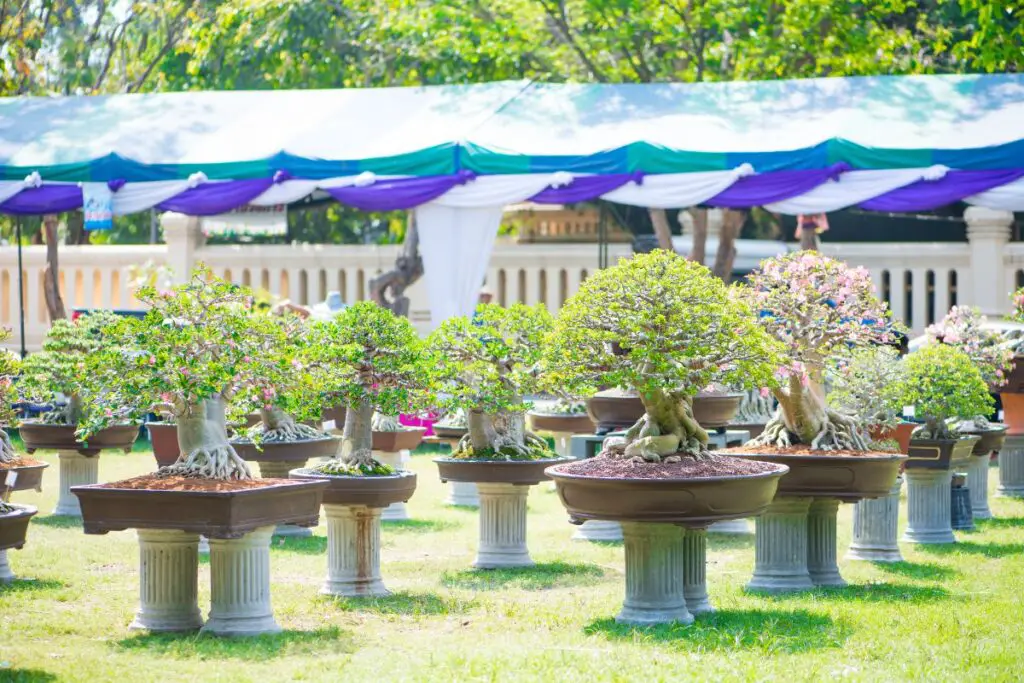
Styling and personalizing your desert rose bonsai is an art that allows you to showcase your creativity while enhancing the natural beauty of the plant. Understanding different styles and techniques for styling your bonsai can help you create a unique and visually appealing masterpiece.
Identifying Styles
It's essential to familiarize yourself with traditional bonsai styles such as formal upright, informal upright, slanting, semi-cascade, cascade, and windswept. Each style embodies distinct characteristics that can be achieved through careful pruning, wiring, and shaping of the branches. For instance, the formal upright style features a straight trunk with evenly spaced branches, resembling the majestic stature of mature trees in nature. On the other hand, the windswept style mimics the effect of strong winds on trees by creating asymmetrical branch formations leaning in one direction.
Understanding these styles empowers you to choose a design that aligns with your artistic vision while complementing the inherent aesthetics of the desert rose bonsai.
Styling Your Bonsai
Styling your desert rose bonsai involves a combination of techniques such as pruning, wiring, and defoliation to achieve the desired shape and form. Pruning is crucial for maintaining the overall structure of the bonsai by removing excess growth and encouraging ramification – the development of secondary branches from primary ones. This process not only enhances the visual appeal but also promotes balanced growth throughout the plant.
Wiring is another fundamental technique used to guide branches into specific positions over time. By carefully wrapping aluminum or copper wires around branches and gently bending them into desired shapes, you can sculpt your desert rose bonsai according to your preferred style. However, it's important to monitor wired branches regularly to prevent them from cutting into bark as they thicken.
Moreover, selective defoliation – removing specific leaves from areas where refinement is required – aids in achieving finer ramification and encourages smaller leaf size over time. This technique contributes to refining branch structures while promoting overall balance within the design.
In addition to these techniques, incorporating elements such as rocks or miniature figurines into your bonsai display can personalize its aesthetic further. These additions can evoke scenes from nature or cultural symbolism depending on your preference.
Conclusion
You've now unlocked the secrets to nurturing a thriving desert rose bonsai. From understanding its unique needs to mastering advanced care techniques, you're well-equipped to embark on this bonsai journey. Remember, the key lies in patience and attentive care. As you apply these insights, don't be afraid to experiment and personalize your approach to suit your bonsai's individuality.
Now it's your turn to put these tips into action and watch your desert rose bonsai flourish. Embrace the process, learn from any challenges, and enjoy the rewarding experience of tending to your own miniature masterpiece. Happy gardening!
Frequently Asked Questions
How often should I water my desert rose bonsai?
Water your desert rose bonsai when the top inch of the soil feels dry. During warmer months, you may need to water every 2-3 days, while in winter, watering once a week should suffice. Always adjust based on environmental conditions and the specific needs of your plant.
What kind of sunlight does a desert rose bonsai need?
Desert rose bonsai thrives in full sunlight, so aim for at least 6 hours of direct sunlight daily. Place it near a south-facing window or outdoors where it can receive abundant sunshine. However, be cautious of scorching heat during peak summer by providing some shade if necessary.
How do I prune and shape my desert rose bonsai?
Prune your desert rose bonsai during the growing season to maintain its desired shape and size. Use clean and sharp tools to remove dead or overgrown branches. Regularly pinch back new growth to encourage branching and create a more compact and aesthetically pleasing form.
What type of soil is best for repotting my desert rose bonsai?
When repotting your desert rose bonsai, use well-draining soil with good aeration. A mix containing components like coarse sand, perlite, and organic matter works well. Avoid heavy soils that retain too much moisture as they can lead to root rot.
How can I encourage blooming in my desert rose bonsai?
To promote blooming in your desert rose bonsai, ensure it receives plenty of sunlight, proper watering, and occasional fertilization during the growing season. Provide a period of cooler temperatures (around 60-65°F) during winter as this can stimulate flower bud formation.
Image Source: Paid image from CANVA

